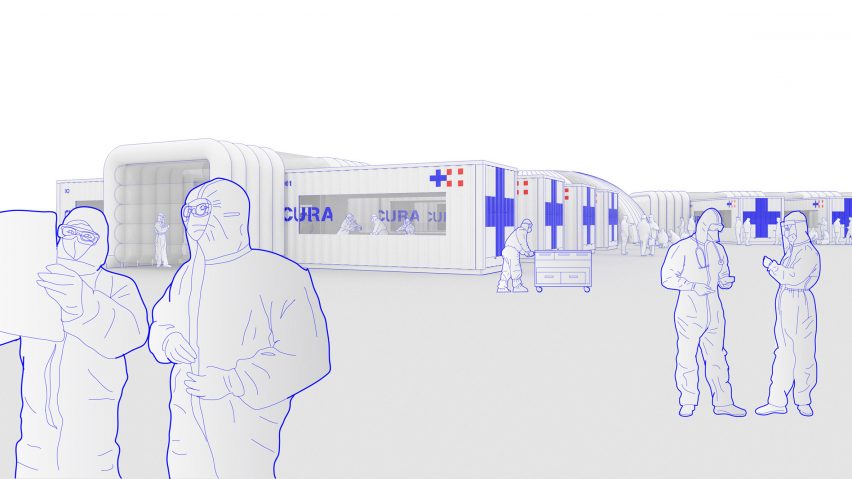
This week, designers created objects and structures to help fight coronavirus
This week on Dezeen, Carlo Ratti designed an intensive care unit for Covid-19 patients from shipping containers and Dyson prepared to provide 15,000 ventilators for the NHS.
Italian architects Carlo Ratti and Italo Rota designed a series of interconnected intensive care unit (ICU) pods from shipping containers, which could be added to hospitals to increase their capacity.
A prototype of the pods, named Connected Units for Respiratory Ailments (CURA), is being built at a hospital in Milan, Italy.

Industrial design brand Dyson also announced this week that it has developed a ventilator, which it plans to produce 15,000 units of in the following weeks.
It took just 10 days for Dyson to design the CoVent ventilator, after UK Prime Minister Boris Johnson contacted the company to help meet the demand caused by the pandemic.
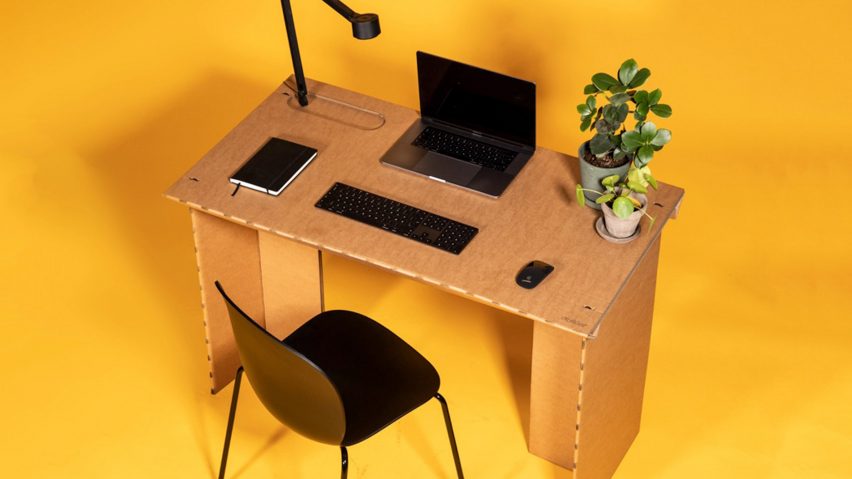
Danish startup Stykka shared a design for a simple flat-pack workstation, called the #StayTheFuckHome Desk, which those in need can easily assemble from three pieces of folded cardboard.
Architectural designers Ivo Tedbury and Freddie Hong have also developed a 3D-printed device that can be attached to door handles to enable hands-free opening, to prevent the spread of coronavirus.
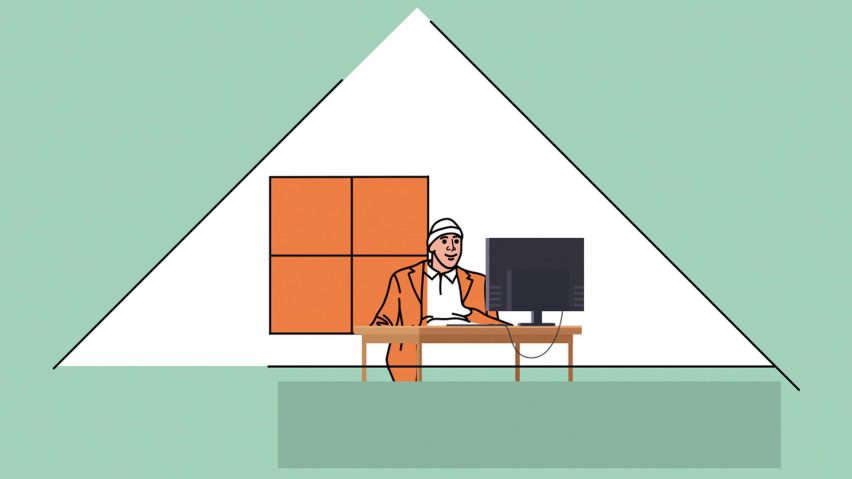
Ukranian architect Sergey Makhno wrote about how our homes will change once the coronavirus pandemic is over, after extended periods of self-isolation have affected our habits.
His forecasted changes include people preferring houses over apartments, wanting to become self-sufficient with their own water supply and heating, and more attention placed on creating a workplace at home.
Dezeen's editor Tom Ravenscroft predicted that the huge amount of people being forced to work-from-home will have long-term impacts on how companies approach remote working.
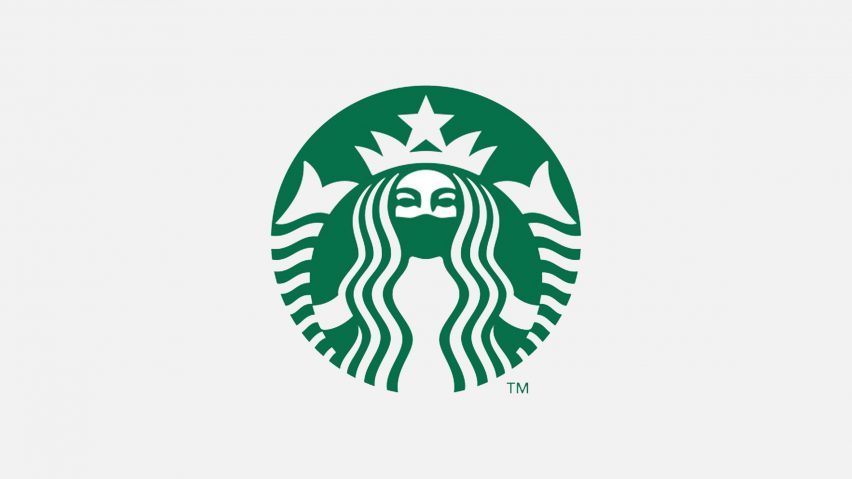
Graphic designer Jure Tovrljan rethought iconic logos including Starbucks, Nike and Mastercard to show how the pandemic is affecting current life.
While cartoonist Toby Morris and microbiologist Siouxsie Wiles created playful animated illustrations of non-contact greetings as well as graphs depicting how the exponential spread of the virus can be slowed.
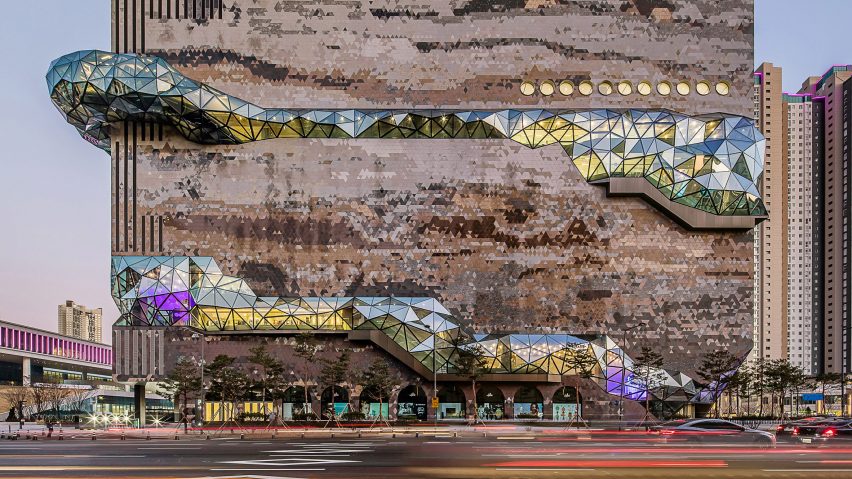
Elsewhere, in architecture news, OMA completed the Galleria department store in Gwanggyo, South Korea, which is clad in tessellated triangles of stone.
Wrapped around the cube-shaped building is a multifaceted-glass passage that appears to be "eating its way through the stone".
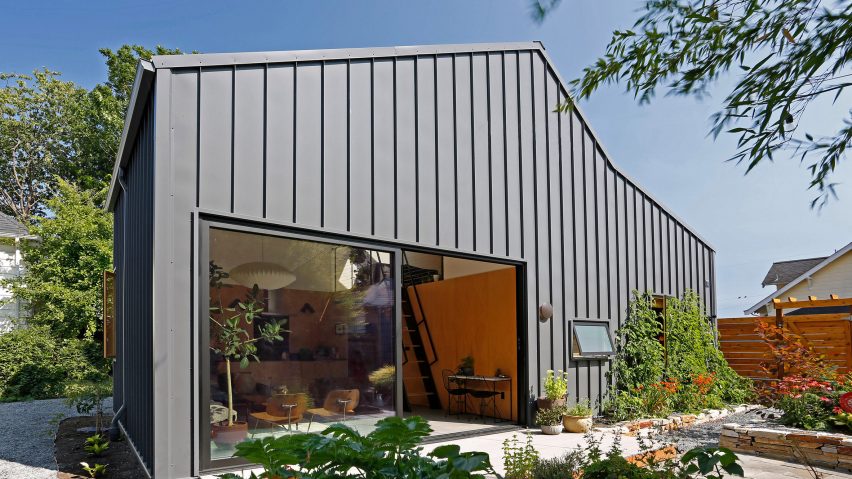
Spanish architect Maria Milans del Bosch designed a two-storey home for herself called Camp O in Claryville, which is a two-hour drive north of New York City, nestled into a hillside to minimise the impact on the surrounding forest.
Meanwhile, Seattle architecture firm SHED designed an aluminium-clad home for a couple who wanted to live in a more compact dwelling at the end of their garden, in order to rent out their main residence.
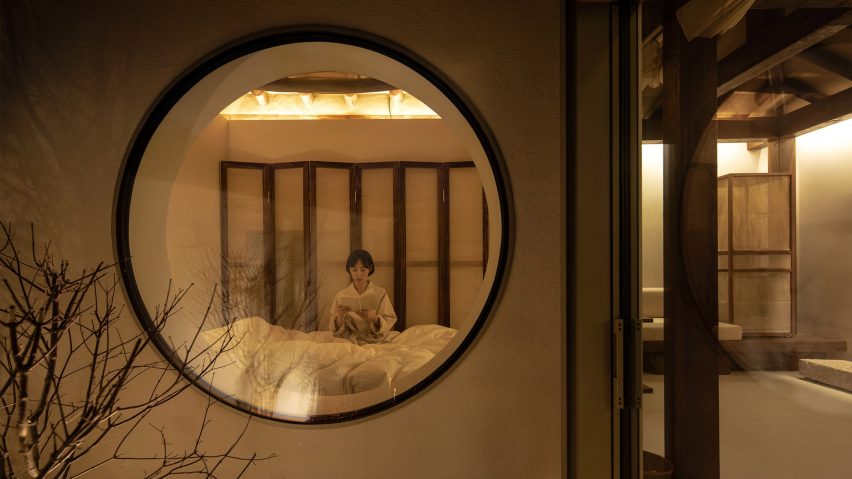
Other projects popular with Dezeen readers this week were a micro guesthouse in Seoul with just one room, an apartment in Kyiv that has cobalt-blue curtains in place of walls, and a Barbican flat in London that can transform into a ballet studio thanks to shapeshifting furniture.